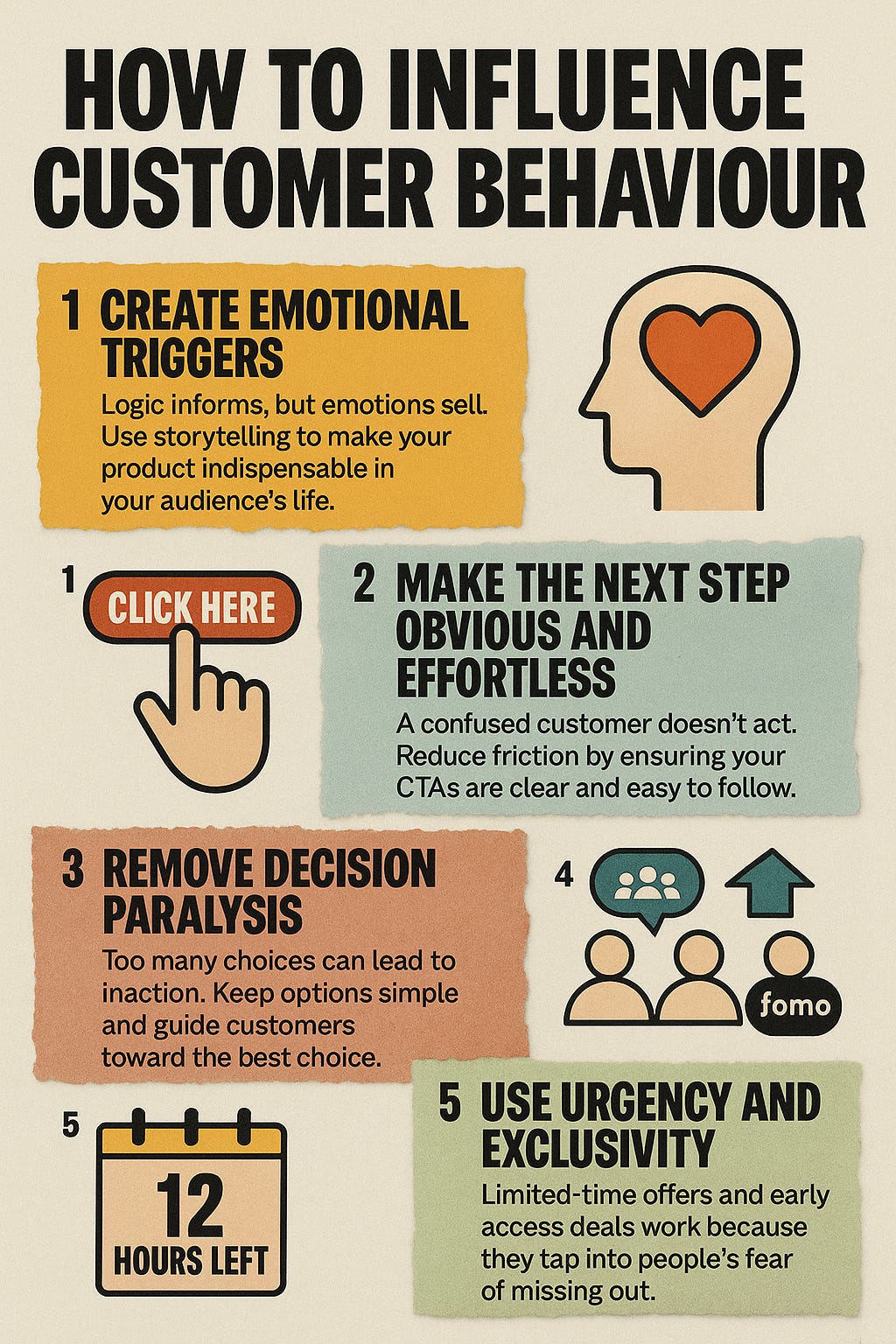Your Job as a Marketer is to Drive Action: Here’s How to Do It
Attention Alone Won’t Cut It—Here’s How to Make Customers Take Action
You’re not in the business of just grabbing attention. Your real job as a marketer? Driving action.
Beautiful branding, witty copy, or a viral post mean nothing if they don’t get people to click, sign up, or buy. In today’s oversaturated content landscape, success comes from understanding what nudges people forward—and making it effortless for them to take that next step.
So how do you actually influence customer behaviour in a way that gets results?
Let’s cut to the chase—here’s what works:
How to Influence Customer Behaviour
1. Create Emotional Triggers
Logic informs, but emotions sell. Use storytelling to make your product indispensable in your audience’s life. Example: Nike doesn’t sell shoes; it sells the feeling of achievement.
2. Make the Next Step Obvious and Effortless
A confused customer doesn’t act. Reduce friction by ensuring your CTAs (Calls to Action) are clear and easy to follow. Example: Instead of "Learn More," use "Get Your Free Trial Now."
3. Remove Decision Paralysis
Too many choices can lead to inaction. Keep options simple and guide customers toward the best choice with "Recommended for You" or "Best Seller" labels.
4. Leverage Social Proof and FOMO
People are more likely to act when they see others doing it. Use testimonials, user-generated content, and "Only 3 Left!" scarcity tactics to nudge hesitant customers.
5. Use Urgency and Exclusivity
Limited-time offers and early access deals work because they tap into people’s fear of missing out. Example: "Offer ends in 12 hours!" can significantly increase conversions.
6. Personalisation Wins Every Time
The more relevant an offer feels, the more likely a customer is to act. Use data to personalise emails, ads, and landing pages to individual customer needs.
Why This Works: The Psychology Behind Action
Understanding how people think is key:
Emotions like trust, fear, and excitement influence behaviour.
Cognitive biases like social proof, loss aversion, and authority nudge decisions.
Simplicity and reduced friction increase conversions.
Great marketing isn’t clever for the sake of it. It’s engineered to make saying yes feel like the obvious choice.
The Impact of Driving Action
Here’s what action-focused marketing actually delivers:
95 percent of our purchase decision making takes place in the subconscious mind (Harvard Business Review).
Urgency-driven campaigns can increase conversions by up to 332% (ConversionXL).
Simplifying checkout processes can reduce cart abandonment rates by 35% (Baymard Institute).
Driving action turns your marketing from “looks good” to “delivers results.”
Final Thoughts
If it doesn’t drive action, it’s not doing its job. Every campaign should have a clear outcome in mind. So ask yourself:
Is my CTA irresistible and frictionless?
Am I tapping into emotion and psychology?
Have I made taking the next step feel easy?
Let me know—what’s your go-to strategy for driving customer action?


